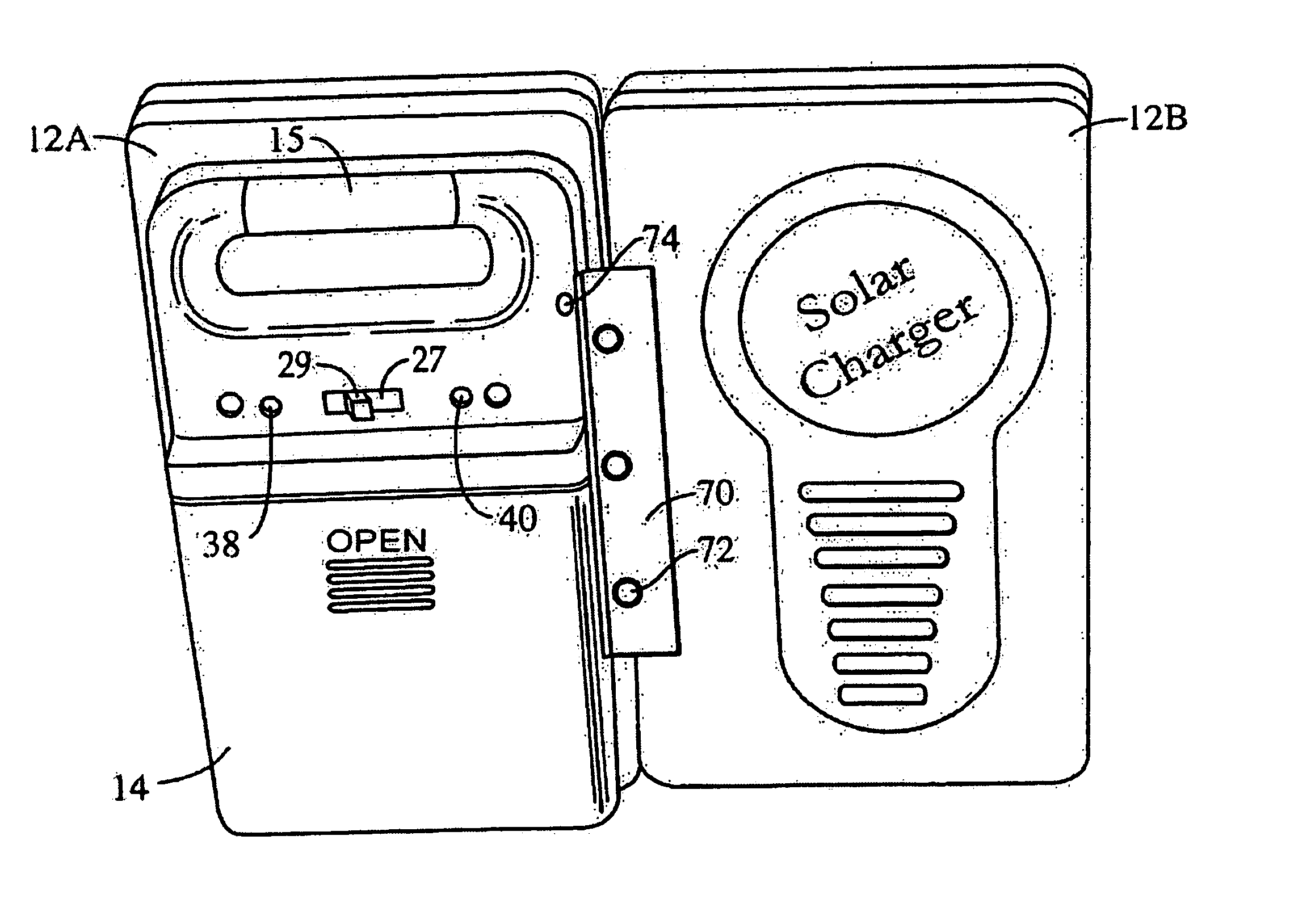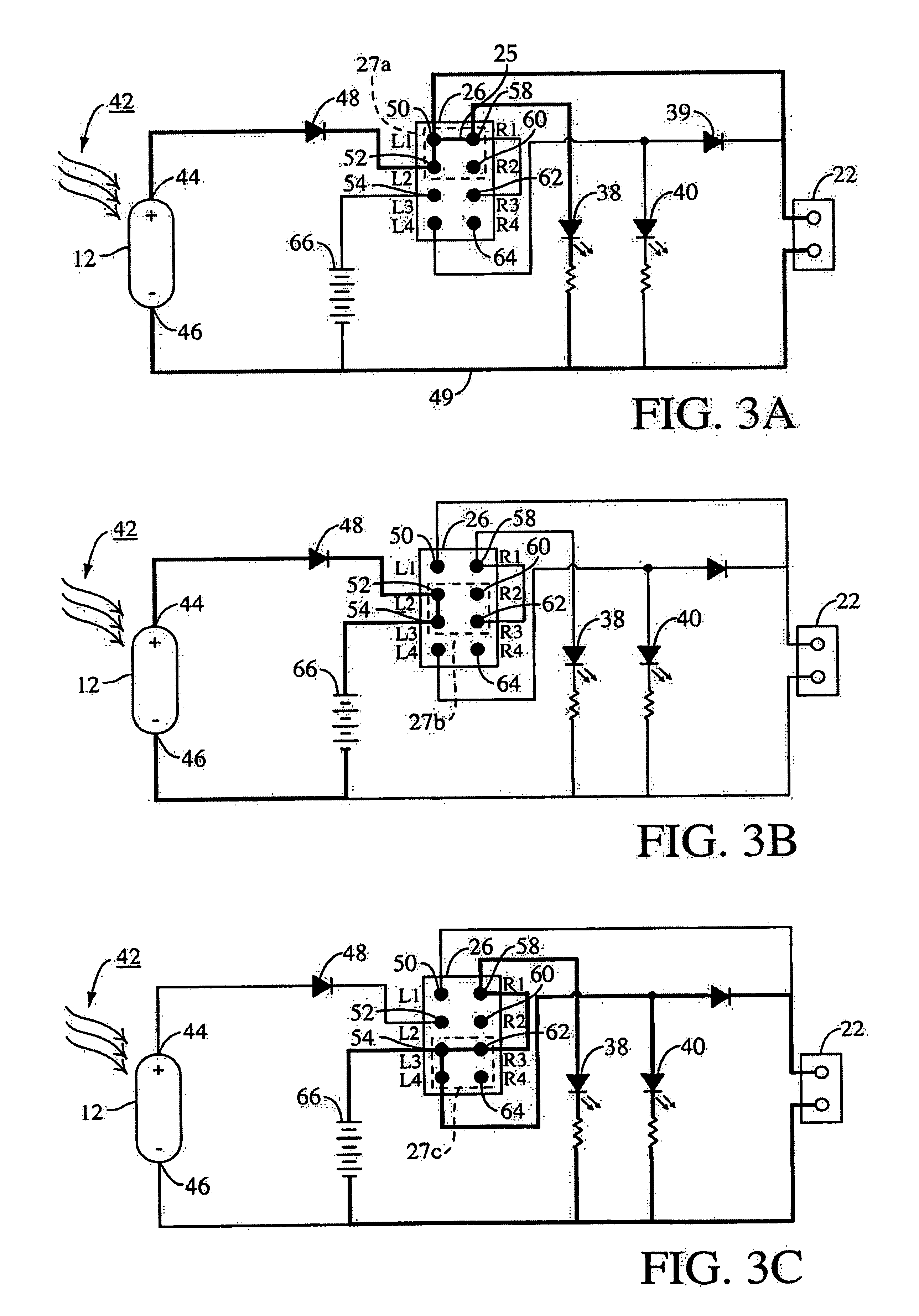Portable cell phone battery charger using solar energy as the primary source of power
a solar energy and charger technology, applied in transportation and packaging, secondary cell servicing/maintenance, electrochemical generators, etc., can solve the problem that the battery may only last a few hours
- Summary
- Abstract
- Description
- Claims
- Application Information
AI Technical Summary
Benefits of technology
Problems solved by technology
Method used
Image
Examples
Embodiment Construction
[0022]Referring now to the drawing, FIG. 1 is a block diagram schematically illustrating an exemplary cellular phone battery charging device in accordance with the present invention. The device 10 includes a solar energy collecting component 12 including two solar enemy collecting panels, a battery charger and switching component disposed in a separate housing 14, and an adapter cable 16 for providing power to and / or charging the battery 18 in a cellular phone 20 connected thereto.
[0023]The battery charger and switching component within housing 14 is suitably electrically connected as suggested by the line 13 to the solar panel component 12 for receiving electrical power converted from solar energy by the solar panels. The technology of converting solar energy to electrical power is well known to those skilled in the art.
[0024]The adapter cable 16 has on one end a first plug (not shown) for connection to a receptacle 22 in the battery charger and switching component housing 14, and ...
PUM
 Login to View More
Login to View More Abstract
Description
Claims
Application Information
 Login to View More
Login to View More - R&D
- Intellectual Property
- Life Sciences
- Materials
- Tech Scout
- Unparalleled Data Quality
- Higher Quality Content
- 60% Fewer Hallucinations
Browse by: Latest US Patents, China's latest patents, Technical Efficacy Thesaurus, Application Domain, Technology Topic, Popular Technical Reports.
© 2025 PatSnap. All rights reserved.Legal|Privacy policy|Modern Slavery Act Transparency Statement|Sitemap|About US| Contact US: help@patsnap.com



